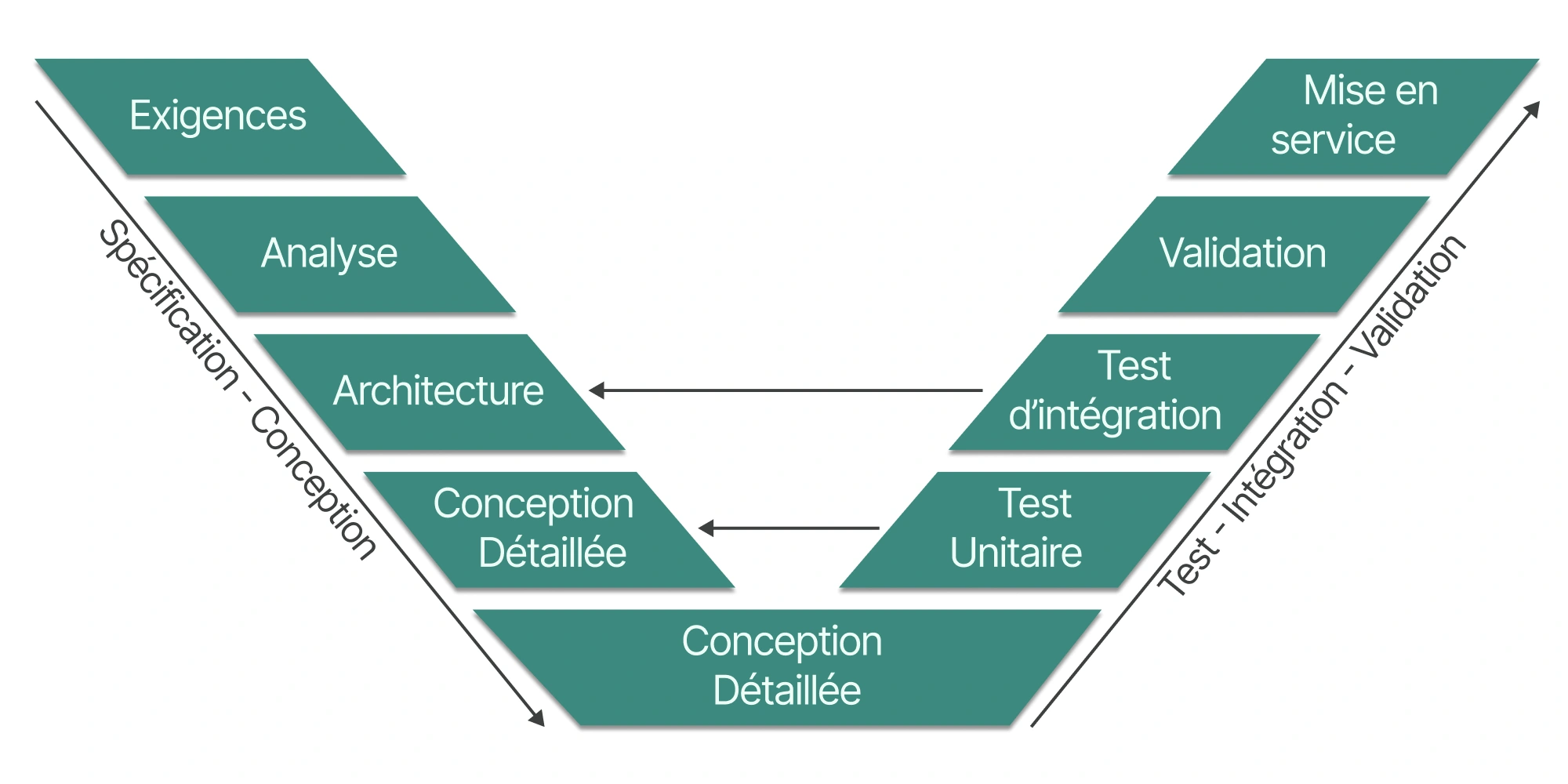The V-Model method: principles, stages, and how it differs from Waterfall
Estimated reading time : 5 minThe V-Model is an evolution of the Waterfall method, designed to address its main limitations. Unlike Waterfall, this approach allows going back when needed, providing more flexibility.
The project is no longer treated as a single block delivered all at once, but as a system made up of multiple elements called components. Visually, the method forms a “V”: the descending phases, similar to Waterfall, are followed by ascending phases that progressively validate the project through various tests involving the client.
The stages of the V-Model
1. Requirements definition
In this phase, the client actively participates in workshops and meetings to define their needs. This critical step lays the foundation and ensures expectations are clear.
2. Analysis
The collected needs are translated into a detailed specification. This document formalizes the requirements and serves as a reference throughout the project.
3. Architectural design
The provider designs the system architecture, identifying the different components required to meet the stated needs.
4. Detailed design
Each component is designed individually to ensure it matches the system specifications.
How it differs from Waterfall
Unlike Waterfall, in the V-Model, product implementation and client testing do not require the entirety of phase 4 to be completed and validated. Each component progresses through the next phases at its own pace.
1. Implementation
Once a component is designed, it is put into service for the client to use.
2. Unit testing
The client tests and validates each component. If a component does not meet expectations, it is reworked in the detailed design phase.
3. Integration testing
The provider assembles all components, which are then tested by the client. If the test fails, the process returns to architectural design to reassess the assembly.
4. Validation
The entire system is tested with the client to verify it meets the requirements set at the start of the project.
5. Go-live
After final validation, the project is released to production or put into service. The client can then fully use it.

V-Model: pros and cons
This method enables greater client involvement throughout the project, improving satisfaction. Although it requires more time and active collaboration, it offers a compelling balance:
- Flexibility: the project can adapt to changes thanks to progressive validations.
- Stability: it preserves the advantages of Waterfall for well-defined projects.
- Client engagement: the client is involved from the first testing phases, leading to a deliverable better aligned with needs.
However, the V-Model remains demanding:
- It requires rigorous organization and experienced teams.
- Budgets and timelines are sensitive to surprises due to potential adjustments during the upward phases.
This method combines the rigor of linear planning with the flexibility needed to deliver a successful project that meets client expectations.
The V-Model is particularly suitable for projects with significant budgets and experienced teams where the client has a clear view of needs but requires progressive adjustments to validate expectations.
Discover other project management methods
Orchesia: optimize your V-Model projects
At Orchesia, we are developing project management software to support your planning and execution.
Combine the rigor of traditional planning with the flexibility of real-time collaboration with your client. Define your project’s requirements, break them down into deliverables and components, and offer full visibility so the client can make progressive adjustments and validate expectations with each component delivery.
Try our project management software Orchesia free for two weeks, no commitment!